Indoor plants have the power to transform a living space, adding color, texture, and a sense of calm. But not everyone has the time or experience to care for dozens of individual pots. That’s where indoor plant walls—also called living walls or vertical gardens—come in. A vertical garden maximizes greenery without taking up floor space and, when designed thoughtfully, can be low-maintenance while remaining visually stunning.
This article will guide you step by step on how to create a low-maintenance indoor plant wall, from planning and selecting plants to installation, lighting, and ongoing care.
Why an Indoor Plant Wall?
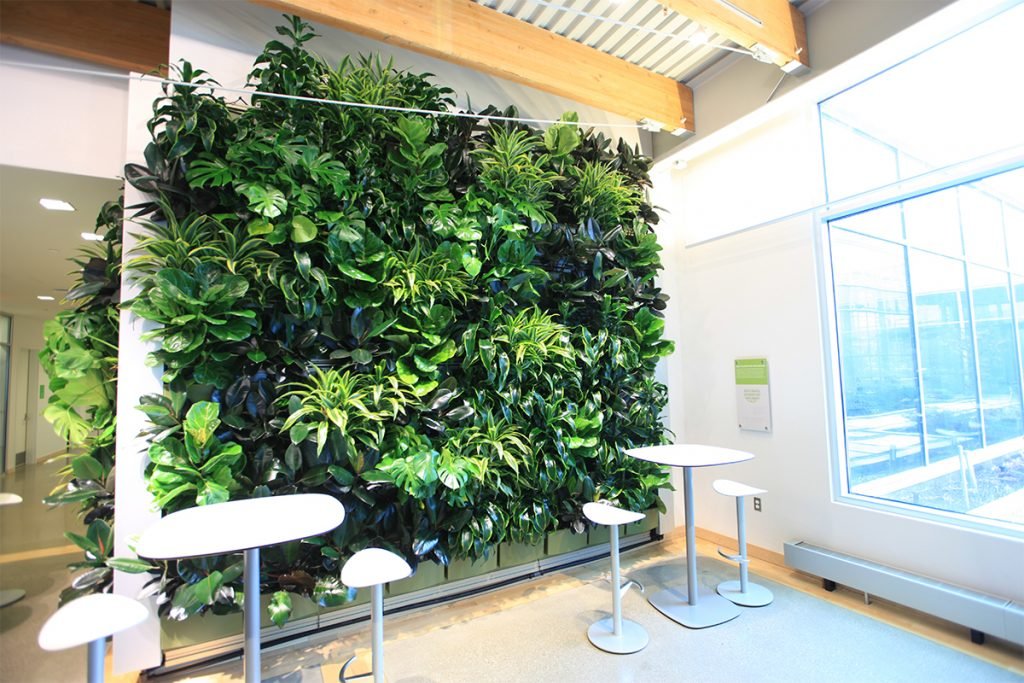
Indoor plant walls offer multiple benefits beyond aesthetics:
- Space Efficiency: Vertical gardens are ideal for apartments or homes with limited space.
- Air Purification: Plants filter indoor air, removing pollutants and improving air quality.
- Acoustic Benefits: Dense greenery can reduce noise levels.
- Mood Enhancement: Green walls reduce stress and increase productivity.
- Energy Efficiency: Plant walls help moderate room temperature by providing insulation.
Choosing the right setup ensures your wall stays thriving with minimal effort, even for busy lifestyles.
Planning Your Plant Wall
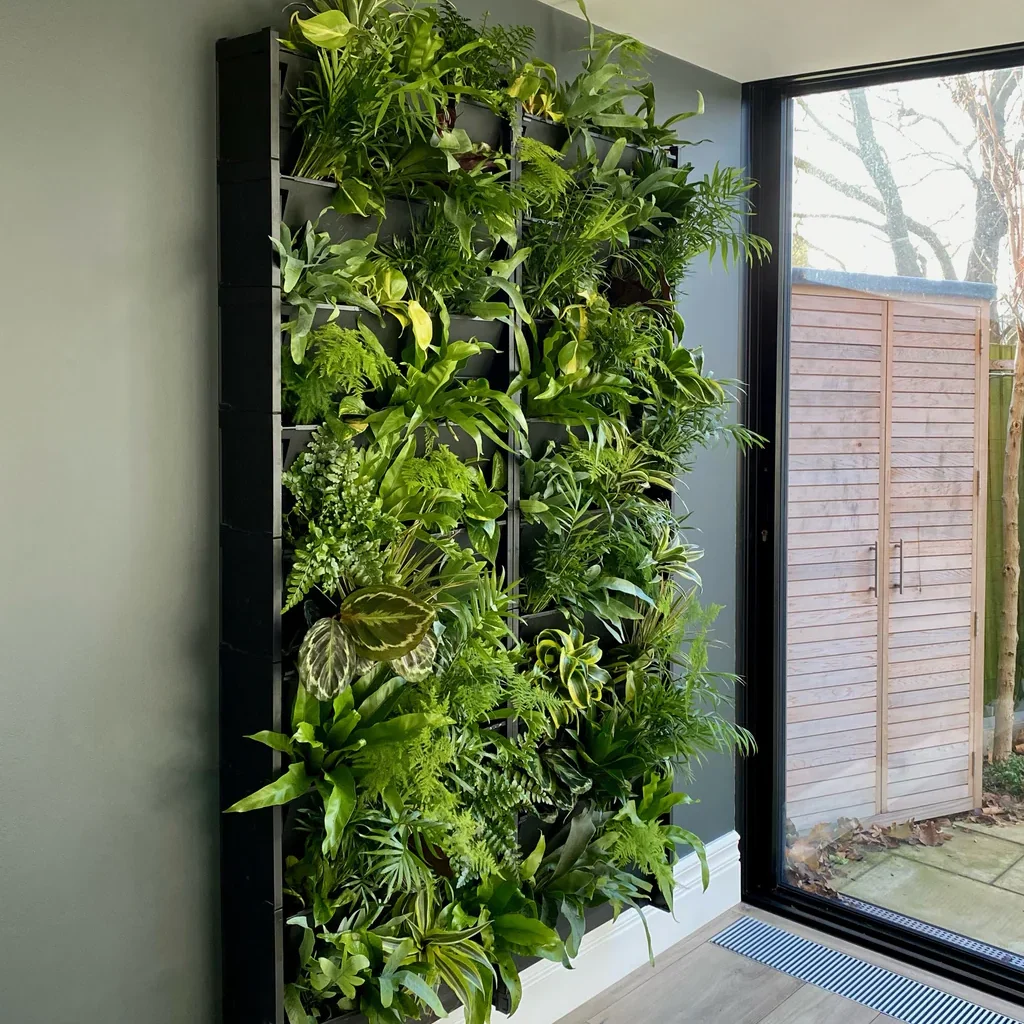
Before purchasing plants or materials, careful planning is essential.
1. Determine Wall Location
- Light Conditions: Choose a wall with sufficient natural light or plan to use artificial lighting. South- or west-facing walls are ideal.
- Accessibility: Ensure you can reach plants for watering, pruning, and occasional cleaning.
- Structural Support: Vertical gardens add weight—verify that walls can support the system, especially if using larger panels or water reservoirs.
2. Choose the Size and Design
- Full Wall vs. Partial Wall: A full wall creates a dramatic effect, while smaller sections can act as green accents.
- Modular Panels: Pre-made panels allow flexibility and easy replacement of individual plants.
- Custom Frames: DIY wooden or metal frames allow tailored design and creativity.
Selecting Low-Maintenance Plants
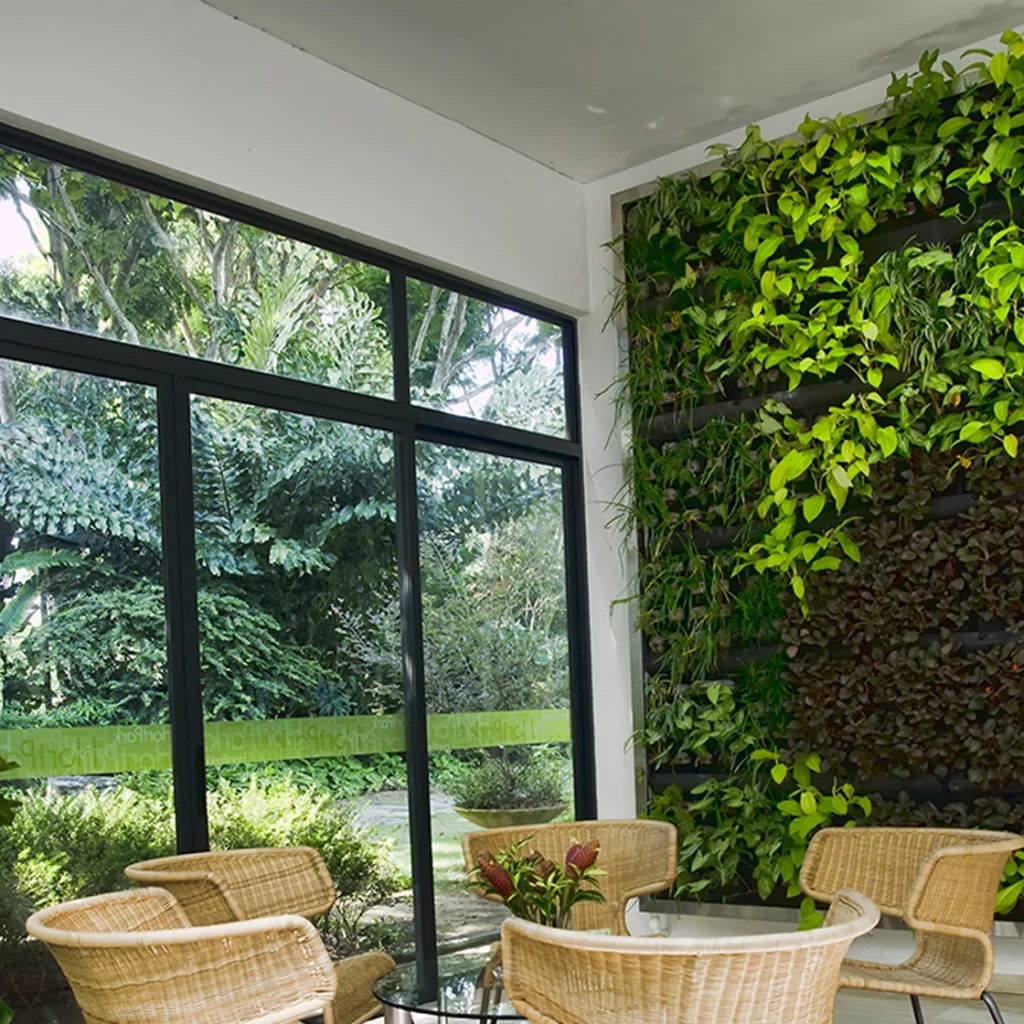
For a vertical garden to remain low-maintenance, choose plants that thrive indoors and tolerate occasional neglect. Here are some excellent options:
Foliage Plants
- Pothos (Epipremnum aureum): Hardy, grows in low light, and tolerates irregular watering.
- Philodendron: Fast-growing and resilient, great for cascading effects.
- ZZ Plant (Zamioculcas zamiifolia): Extremely drought-tolerant and low-light friendly.
- Ferns (Boston Fern, Maidenhair Fern): Adds lush greenery, thrives with occasional misting.
Succulents and Cacti
- Hens-and-Chicks (Sempervivum): Minimal watering, slow-growing.
- Aloe Vera: Requires little care and doubles as a medicinal plant.
Trailing and Climbing Plants
- English Ivy: Cascades elegantly; trim as needed.
- String of Pearls: Unique visual effect, drought-tolerant.
Herbs (Optional)
- Mint, Basil, Parsley: Great for kitchen walls with moderate light.
Tip: Combining trailing, upright, and compact plants creates a visually dynamic wall while balancing care needs.
Choosing the Right Wall System
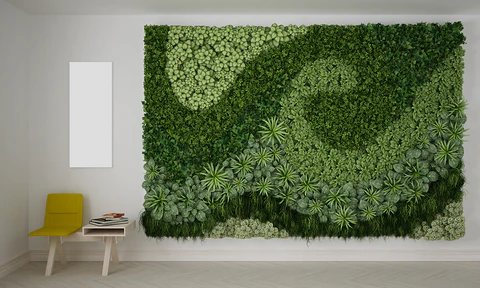
A low-maintenance plant wall can be installed using several methods:
1. Pocket Planters
- Fabric or felt pockets attach to a backing frame.
- Allows roots to breathe and drain naturally.
- Easy to replace individual plants.
2. Modular Plant Panels
- Rigid panels with built-in planting slots.
- Simple to install, can be connected for large walls.
- Some include integrated irrigation systems.
3. Vertical Shelves
- Small pots placed on staggered shelves.
- Very flexible; pots can be rearranged.
- Minimal modification to the wall structure.
4. Hydroponic or Self-Watering Systems
- Ideal for minimal care.
- Nutrient solution delivered automatically to plants.
- Reduces watering frequency and ensures consistent growth.
Lighting for Indoor Plant Walls
Plants need light for photosynthesis, so light planning is crucial:
- Natural Light: Position the wall near windows that provide bright, indirect sunlight.
- Grow Lights: For low-light spaces, use LED full-spectrum lights.
- Mount lights above or alongside the wall.
- Keep lights 6–12 inches away from foliage.
- Provide 12–14 hours of light daily.
- Light Diffusion: Use reflective surfaces to maximize light distribution.
Tip: Low-maintenance plants generally tolerate indirect light, reducing the need for expensive lighting setups.
Watering and Irrigation
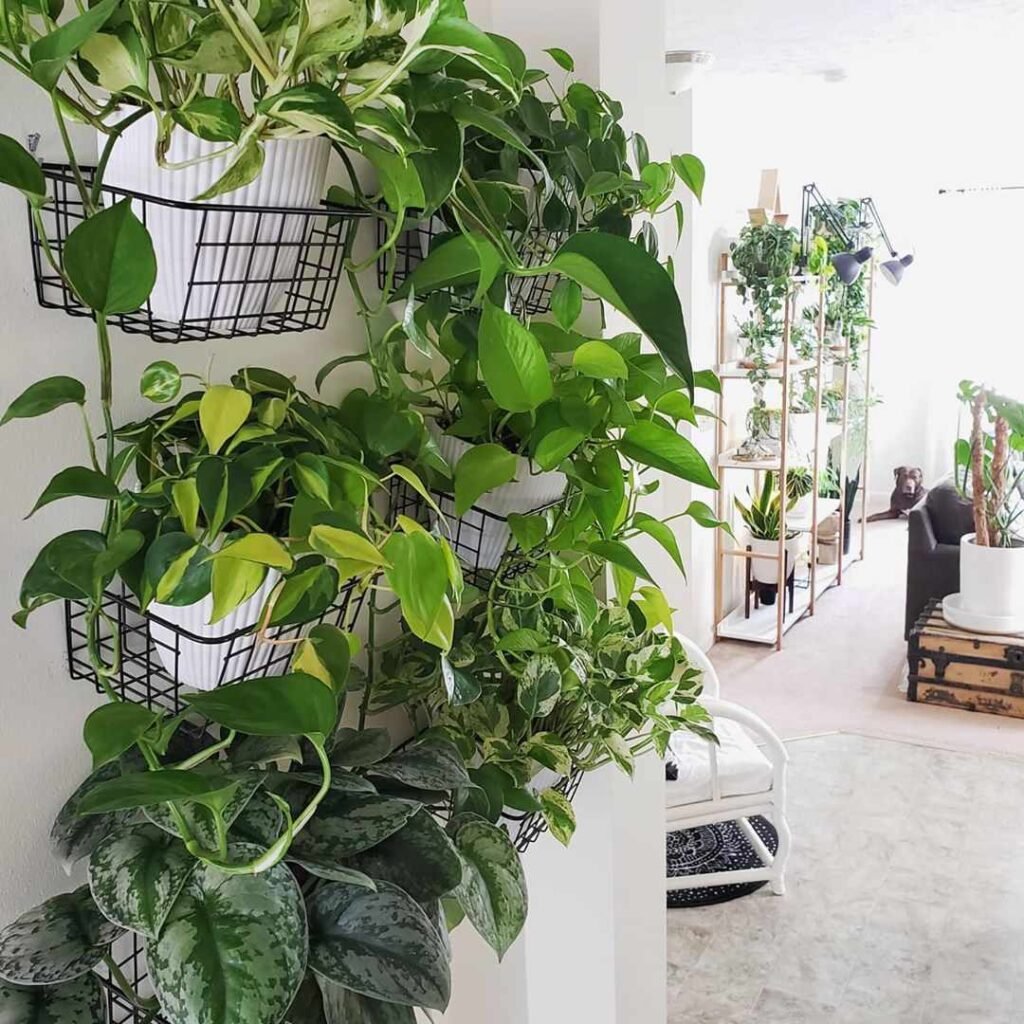
Watering is the most common challenge for vertical gardens. Low-maintenance walls rely on efficient irrigation strategies:
- Drip Irrigation: Delivers water directly to each plant, minimizing overwatering.
- Self-Watering Reservoirs: Store water at the base, feeding plants gradually.
- Capillary Mats: Plants draw water as needed via capillary action.
Watering Tips:
- Use a moisture meter to avoid overwatering.
- Water less frequently for succulents; more often for ferns.
- Ensure good drainage to prevent root rot.
Planting and Installation Tips
- Prepare the Wall: Install the frame or panel securely, ensuring stability.
- Add Substrate: Use lightweight, well-draining media such as coconut coir, sphagnum moss, or hydroponic sponges.
- Plant Placement: Arrange plants according to light and growth patterns:
- Taller, upright plants at the bottom or center.
- Trailing plants along the edges for cascading effect.
- Spacing: Allow 3–6 inches between plants for growth and air circulation.
- Secure Plants: Use clips, ties, or moss to stabilize young plants in vertical pockets.
Maintenance for a Low-Maintenance Wall
Even a low-maintenance wall needs occasional attention:
- Pruning: Trim overgrown leaves to maintain shape and encourage bushiness.
- Cleaning: Dust leaves to maintain photosynthesis efficiency.
- Fertilizing: Apply liquid fertilizer every 4–6 weeks.
- Monitoring Health: Watch for yellowing leaves or pests; remove affected foliage promptly.
- Replace Plants as Needed: Swap out slow-growing or struggling plants to keep the wall vibrant.
Tip: Low-maintenance walls focus on resilience, so choose hardy plants that tolerate minor neglect.
Common Problems and Solutions
| Problem | Cause | Solution |
|---|---|---|
| Wilting leaves | Underwatering or heat stress | Increase watering frequency, adjust temperature |
| Yellowing leaves | Overwatering or nutrient deficiency | Check irrigation, apply balanced fertilizer |
| Mold or fungus | Poor air circulation or overwatering | Improve airflow, reduce humidity |
| Pests | Aphids, spider mites | Wipe leaves, use insecticidal soap or neem oil |
| Uneven growth | Insufficient light | Reposition wall or add grow lights |
Design Tips for Visual Impact
- Mix Textures: Combine smooth leaves, ferns, and trailing vines for contrast.
- Color Variation: Use different shades of green and splashes of color from flowering or variegated plants.
- Pattern Arrangement: Create geometric or natural flowing patterns for artistic appeal.
- Layering: Place larger plants at the back and smaller ones in front for depth.
Tip: A visually balanced wall not only looks appealing but also promotes plant health by ensuring light reaches all foliage.
Conclusion
A low-maintenance indoor plant wall is an ideal solution for anyone seeking the beauty of greenery without the hassle of managing numerous pots. By selecting hardy, adaptable plants, choosing an efficient vertical system, and implementing proper lighting and irrigation strategies, you can create a thriving indoor oasis.
Indoor plant walls enhance air quality, improve well-being, and provide a living piece of art in your home. With thoughtful planning and minimal upkeep, your vertical garden can flourish year-round, creating a refreshing, green focal point that transforms your living space into a healthier and more vibrant environment.
Whether for a home, office, or commercial space, a low-maintenance indoor plant wall combines aesthetics, functionality, and wellness, making it one of the most rewarding additions to modern interior design.
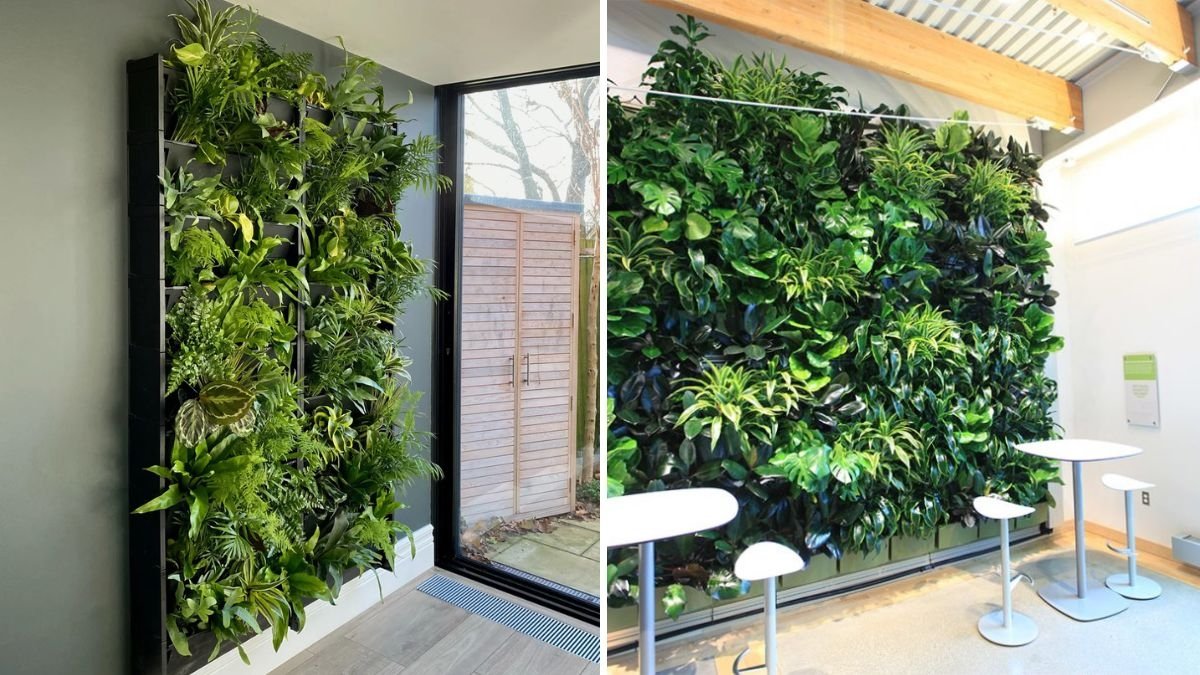




Leave A Comment